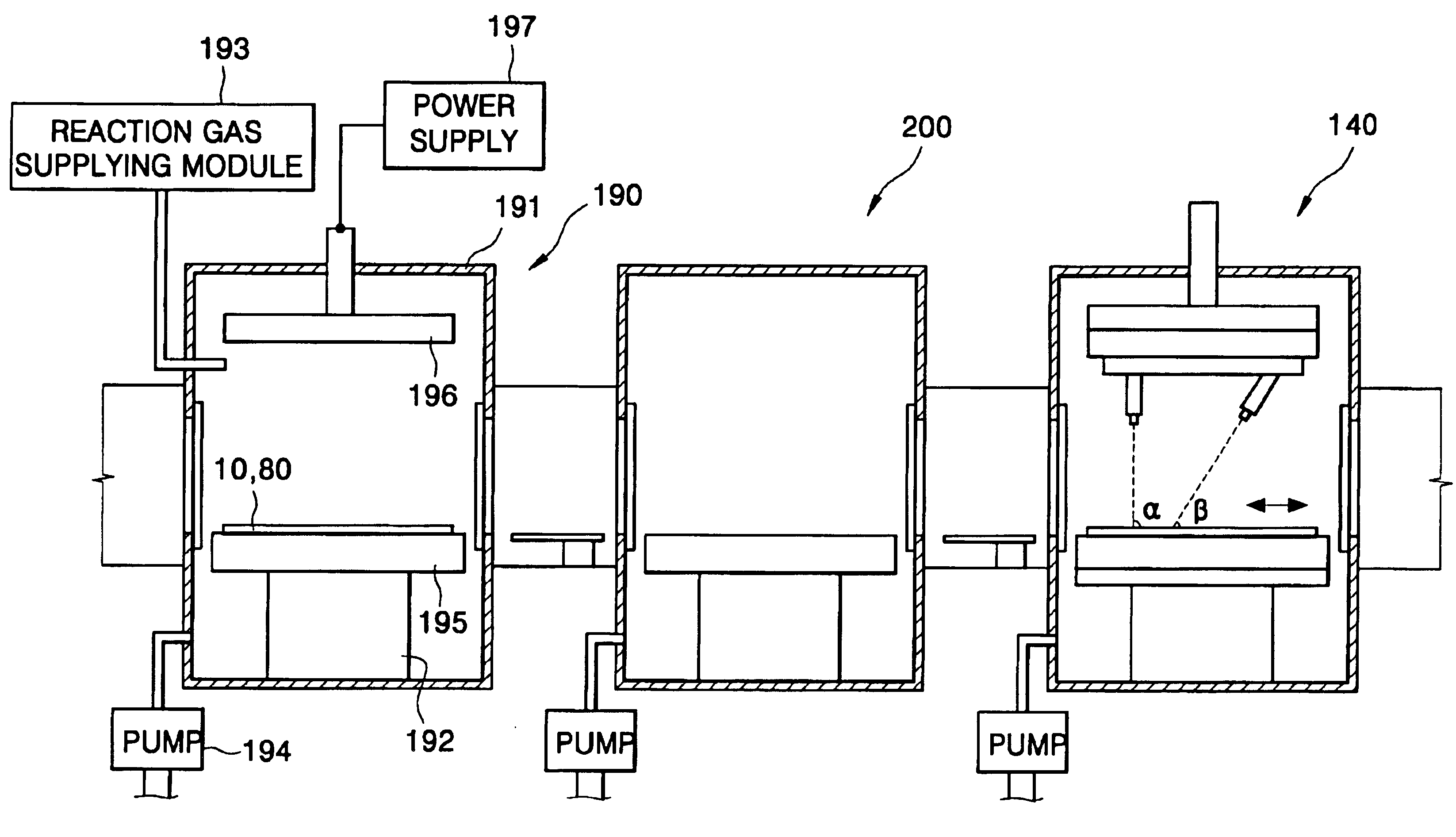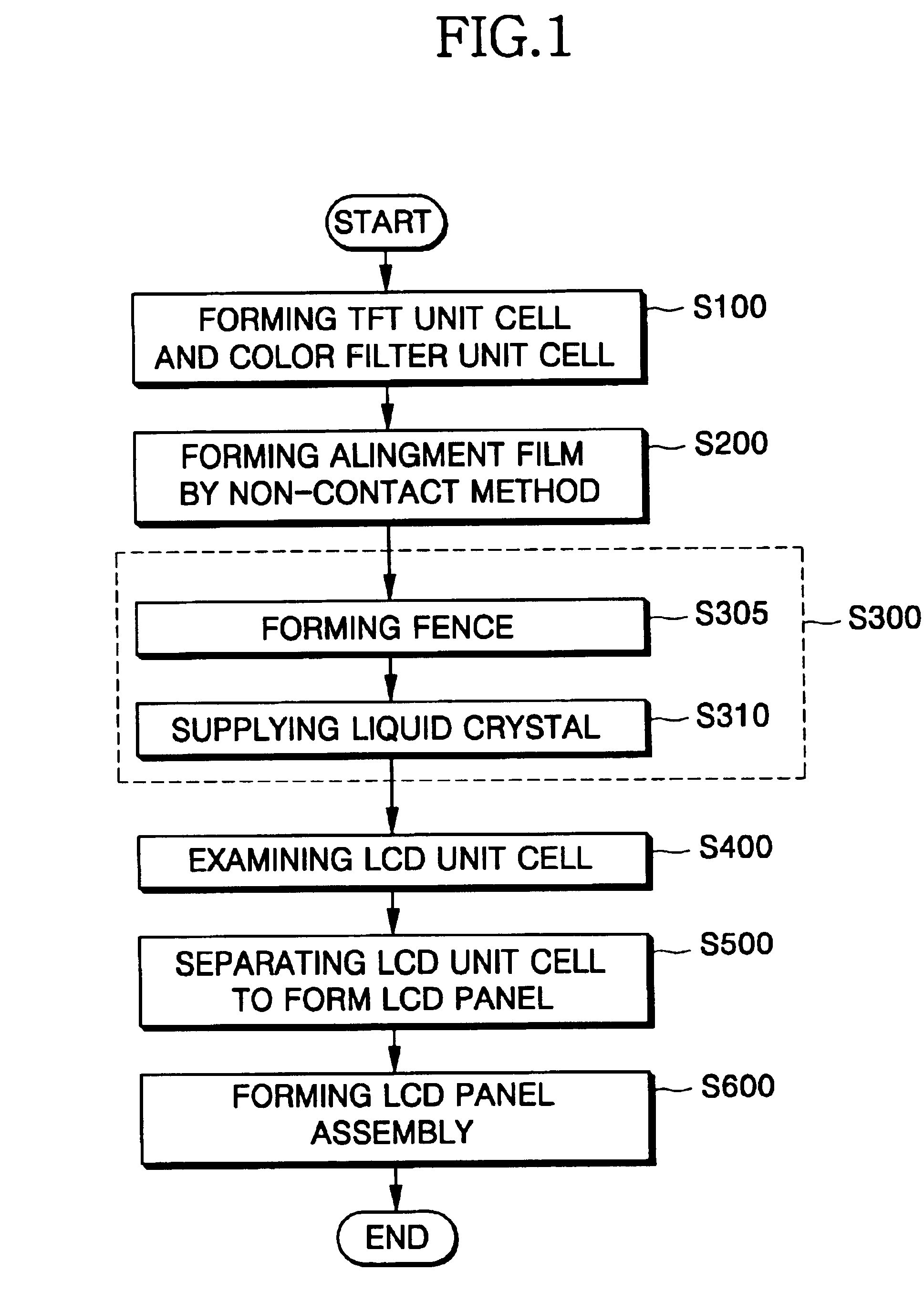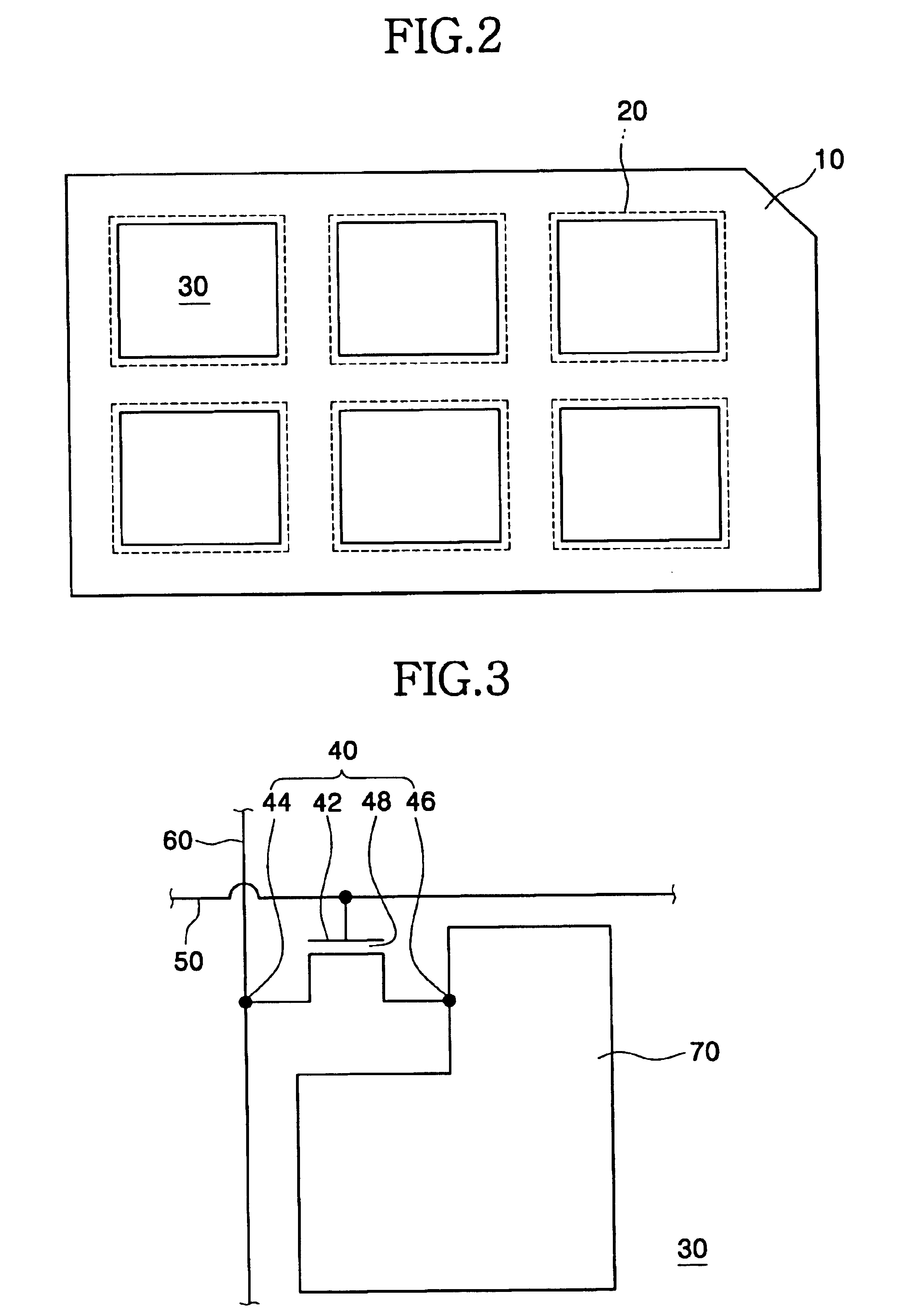Apparatus for attaching polarizing plate
a technology of polarizing plate and polarizing plate, which is applied in the direction of polarizing elements, instruments, chemistry apparatus and processes, etc., can solve the problems of high manufacturing cost, many critical problems in conventional manufacturing processes, so as to reduce the time for enhance the productivity of manufacturing liquid crystal display devices
- Summary
- Abstract
- Description
- Claims
- Application Information
AI Technical Summary
Benefits of technology
Problems solved by technology
Method used
Image
Examples
first embodiment
<First Embodiment of a Non-Contact Type Alignment of Liquid Crystal Molecules>
In order to align liquid crystal molecules on the thin film transistor unit cell 30 of FIG. 2 or on the color filter unit cell 100 of FIG. 5, an alignment film and an atomic beam to be applied to the alignment film are needed.
FIG. 7 is a cross-sectional view showing an alignment film formed on the first mother substrate or the second mother substrate according to the first exemplary embodiment.
Referring to FIG. 7, an alignment film 130 includes a diamond-like-carbon thin film (DLC film) formed on surfaces of the thin film transistor unit cell and on the color filter unit cell. The alignment film 130 may include SiO2, Si3N4 and TiO2 aside from the diamond-like-carbon thin film.
Hereinafter, the diamond-like-carbon thin film is referenced by the reference numeral 130.
The diamond-like-carbon thin film 130 is used as an alignment film because the diamond-like-carbon thin film 130 has a carbon-carbon double...
second embodiment
<Second Embodiment of a Non-Contact Type Alignment of Liquid Crystal Molecules>
FIG. 13 is a flow chart showing a method of aligning liquid crystal by a non-contact method according to a second exemplary embodiment.
In previous procedure, the diamond-like-carbon thin film having a carbon-carbon double bond is formed on the first substrate 10 having the thin film transistor unit cell 30 of FIG. 2 or on the second substrate 80 having the color filter unit cell 100 of FIG. 5. The diamond-like-carbon thin film is formed via Chemical Vapor Deposition (CVD).
Referring to FIG. 13, the atomic beam collides with the diamond-like-carbon thin film, so that a polarized functional group for aligning liquid crystal molecules is generated (step S225).
FIG. 14 is a flow chart showing a method of generating a polarized functional group in the diamond-like-carbon thin film according to the second exemplary embodiment.
Referring to FIG. 14, a first ion beam is generated and accelerated toward the diam...
third embodiment
<Third Embodiment of a Non-Contact Type Alignment of Liquid Crystal Molecules>
FIG. 16 is a flow chart showing a process of introducing a hydrogen ion into the polarized functional group according to a third exemplary embodiment of the present invention.
Deionized water is supplied to the surface of the diamond-like-carbon thin film in order that hydrogen ion (H+) is combined with the sub-chain (step S233).
Then, ultra-violet ray is irradiated onto the surface of the diamond-like-carbon thin film in order that the hydrogen ion (H+) is combined with the sub-chain (step S234).
When the ultra-violet ray is irradiated on the deionized water, two hydrogen ions and one oxygen ion are generated as shown in the following chemical formula.
<Chemical Formula 1>
H2O−>2H++O−2
The hydrogen ion (H+) dissociated by the ultra-violet ray is combined with the sub-chain to form a C—H bond.
When the hydrogen ion (H+) is combined with the sub-chain formed in the diamond-like-carbon thin film in which ...
PUM
| Property | Measurement | Unit |
|---|---|---|
| size | aaaaa | aaaaa |
| temperature | aaaaa | aaaaa |
| angle | aaaaa | aaaaa |
Abstract
Description
Claims
Application Information
 Login to View More
Login to View More - R&D
- Intellectual Property
- Life Sciences
- Materials
- Tech Scout
- Unparalleled Data Quality
- Higher Quality Content
- 60% Fewer Hallucinations
Browse by: Latest US Patents, China's latest patents, Technical Efficacy Thesaurus, Application Domain, Technology Topic, Popular Technical Reports.
© 2025 PatSnap. All rights reserved.Legal|Privacy policy|Modern Slavery Act Transparency Statement|Sitemap|About US| Contact US: help@patsnap.com



